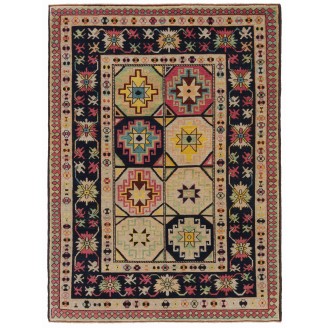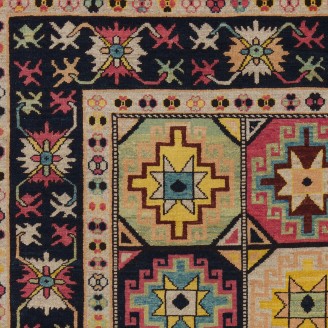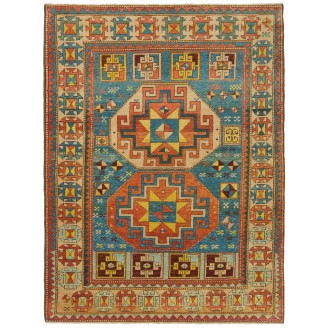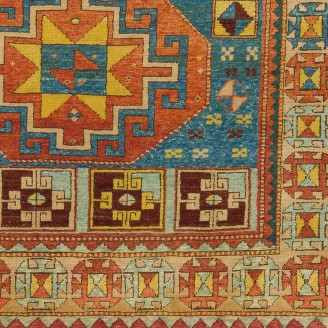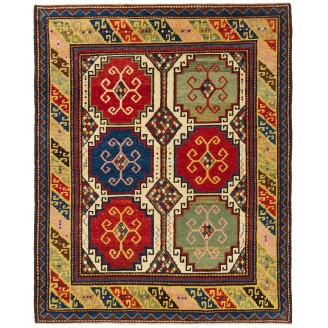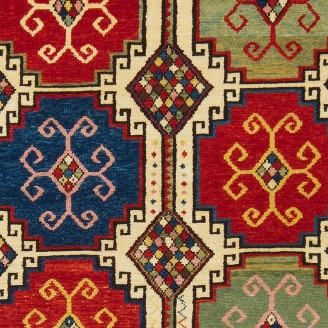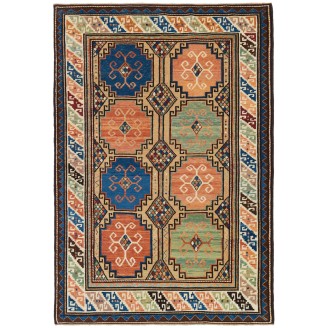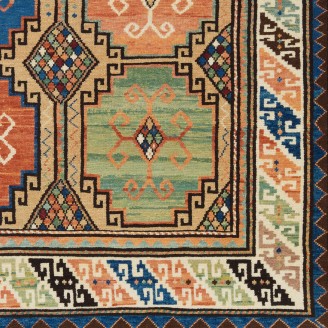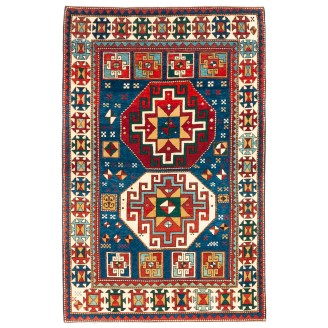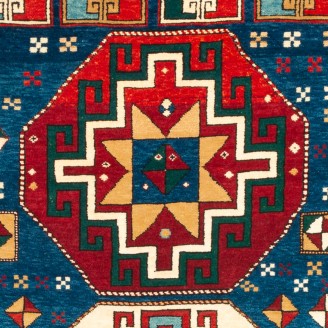Memling Gul Kazak Rug
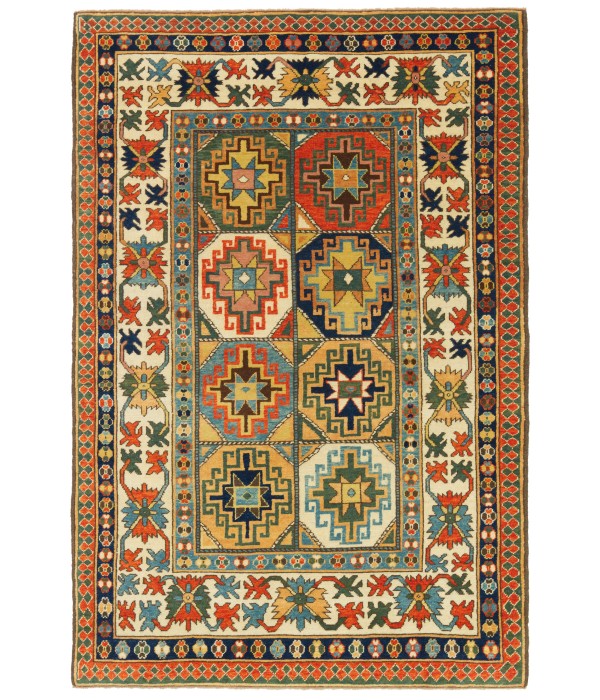
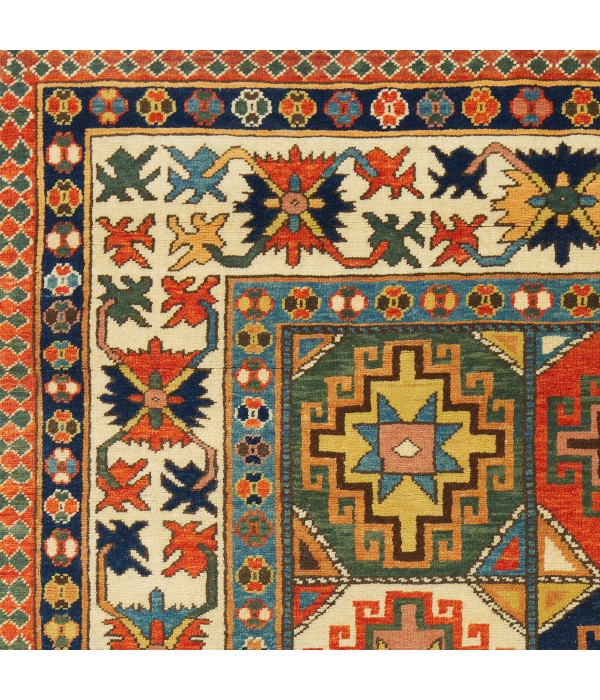
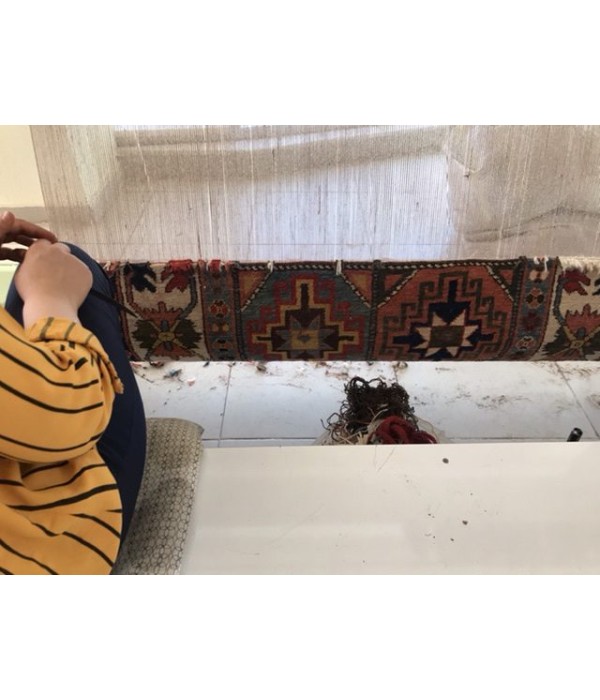
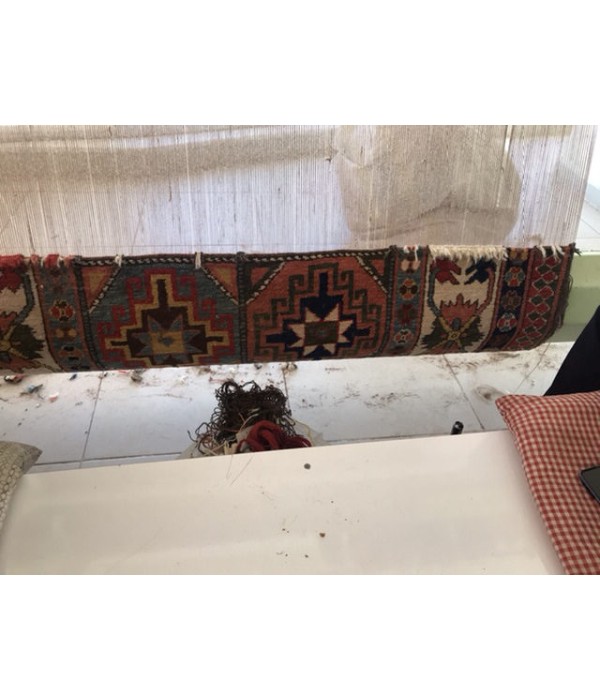
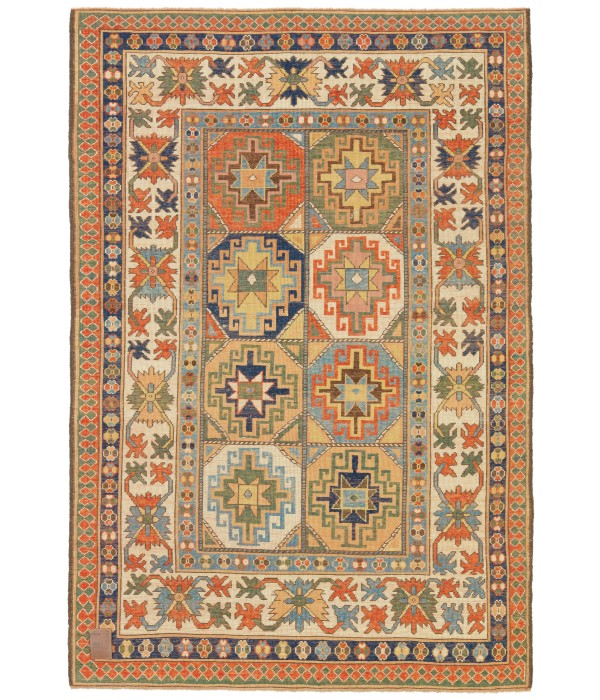
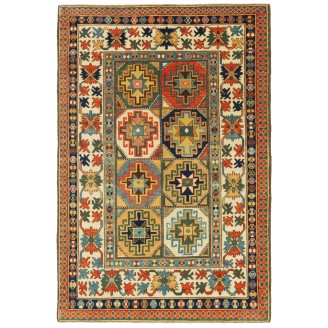
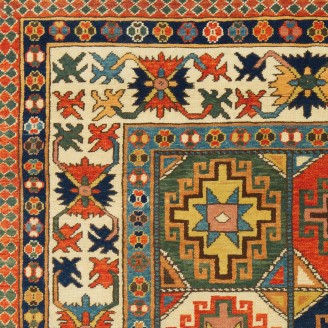
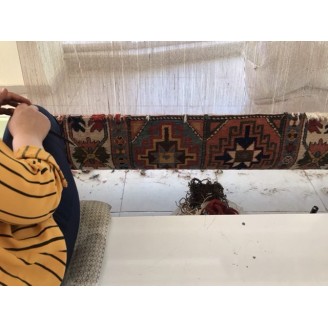
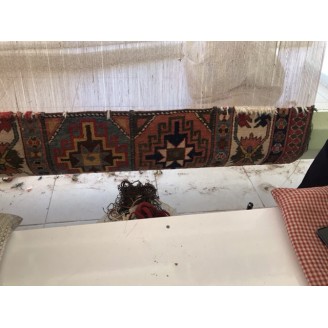
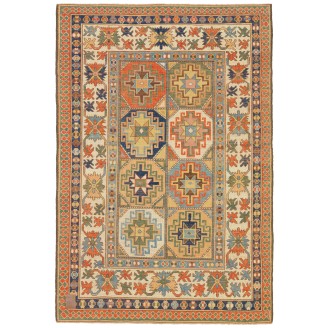
Model: ART00438Memling Gul Kazak Rug
Group: Caucasian Rugs Family
Area: Kazak
Material of Pile: Natural Dyed Hand-spun Wool
Material Warp / Weft: Wool on Wool
Structure: Symmetrical knot
Knots Density: 36x29
Pile (mm): 3
Production Place: Southeastern Anatolia – Gaziantep Province - Oğuzeli
Weight: 6.60kg
Location: Istanbul
Stock: In Stock
Dimensions:
The source of the rug comes from the book Oriental Rugs Volume 1 Caucasian, Ian Bennett, Oriental Textile Press, Aberdeen 1993, nr.158 and Caucasian Carpets, E. Gans-Reudin, Thames and Hudson, Switzerland 1986, pg.68. This is a very popular Kazak design with the Memling ( Memlinc ) güls within octagons in a double vertical row rug from the late 19th century, Kazak region, Caucasus area. It is often difficult to distinguish between rugs woven in the Kazak, Karabakh, Genje, and Moghan districts. Rugs with rows of stepped and hooked rectangles within octagons (the so-called "Memling gül" named after the 15th century Flemish artist Hans Memling, in some of whose paintings such rugs are depicted) are often attributed without clear evidence to Moghan. As well as in many other Caucasian areas, pieces of this design were also woven in Anatolia, and it is generally assumed that the rugs which appear in Memling's paintings, and those in the works of other 15th and 16th century Flemish and Italian painters, were probably Turkish rather than Caucasian. This theory, however, remains unproven. The design of this rug is interpreted by our designers and vivid colors are chosen for this rug.
Color summary: 10 colors in total, most used 4 colors are;
Color summary: 10 colors in total, most used 4 colors are;
- Natural Wool Color 320 (Natural Sheep's Color)
- Scarlet 5 (Madder Root)
- Tussock 550 (Madder Root - Walnut Husk)
- Bistre Brown 411 (Pomegranate - Madder Root)
Dimensions:
4 ft 3 in x 6 ft 4 in ( 131cm x 194cm )
Price:
$2,950
Ex Tax: $2,950

